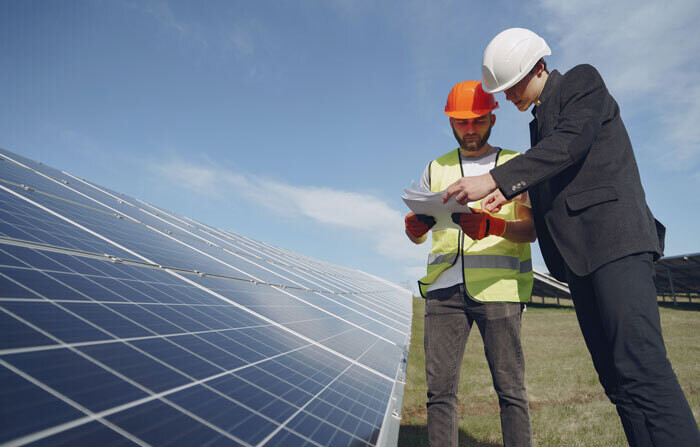How EarthShift Global Supports the US Solar Power Boom with Robust Greenhouse Gas Assessments for Solar Farm Arrays

Solar-generated electricity is booming in the United States, with about 19 gigawatts (GWdc) of capacity added in 2020. That’s a record 43 percent of new U.S. generating capabilities, and even larger additions are in the works for 2021 and beyond, according to the Solar Energy Industries Association (SEIA). EarthShift Global is proud to support this trend by providing reliable greenhouse gas (GHG) impact assessments for solar photovoltaic (PV) installations, including utility scale solar farms.
Some might ask why solar power plants need GHG impact assessments when they seem to have such obvious sustainability benefits. A big reason is that roughly three-quarters of new US solar capacity comes from utility-scale generating facilities that can cover hundreds or even thousands of acres. They’re often built on existing forest, farmland, or other types of terrain that provide significant but less-visible GHG benefits, contribute to local food supplies, or have other positive characteristics.
As a result, state and local regulators and other stakeholders are, rightly, asking solar plant developers to provide evidence during the permitting process that their projects will produce a net environmental gain in a reasonable amount of time. Our proven assessment methodologies are an ideal tool for the job, and we’ve conducted a dozen such studies for solar projects in New England ranging from 2MW to 50MW, with nearly all of them having successfully received permits or begun construction.
Assessing a 218-acre Solar Farm
What does this look like in practice? You can see a summary of one of our solar PV facility GHG impact assessments and answers to subsequent questions here
In this case, a 218-acre site in Connecticut was being evaluated for a solar plant with annual capacity of about 90,000 megawatt-hours, enough to power about 10,000 typical homes.
We evaluated the expected 20-year GHG effects of the project by comparing a baseline scenario (the land remaining in its existing condition and added natural-gas plant capacity providing an equivalent amount of electricity) with the project’s impacts. These included GHGs generated by production and transport of the solar panels and other infrastructure, loss of GHG sequestration by trees and other flora, and the carbon dioxide generated by the chipping and decay of some on-site trees. We also looked at the effects of displacing the corn and soybean cultivation taking place on the land in question.
The primary finding was that the project would result in about a 90 percent reduction in GHGs compared to the baseline scenario, largely because of the emissions from natural gas power production. And we were able to respond to queries from public officials and stakeholders to confirm a GHG “payback period” of about seven years for the project (most of the negative impacts come early on, so a 5 to 8-year period is what we usually see). This all helped the project move successfully through its second pass at winning a permit in 2019-2020.
This study is a fairly typical example of solar farm GHG assessments we’ve done, and we’ve also conducted GHG emissions assessments for battery energy storage projects. These types of project are generally modest in scale and take roughly 4-6 weeks to conduct once our team has the information we need about the solar installation.
Make Your Planning and Permitting Easier
If you’re involved in solar PV plant planning or permitting, we’re glad to provide further information about how we can help you build your case with tangible, robust evidence that will stand up to questions and scrutiny. Send an email to [email protected] or call us at (207) 608-6228.

You can also learn more about solar facility planning and permitting at the upcoming (virtual) Maine Association of Wetland Scientists (MAWS) Spring Conference. Your correspondent Sam Boduch will be on a panel discussing the “Maine Solar Wave,” and the drivers of interest and action behind the boom of solar PV planning and installation in the state. We’ll also zero in on some of the regulatory hurdles that can be addressed when permitting utility-grade solar in the region.
The conference is tentatively scheduled for Wednesday, March 24; you can get updates as conference plans are finalized by visiting the news page on the MAWS website.